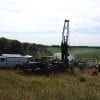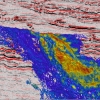Applications of UDEC in rock slope stability
Online course |
|
50 hours / 6 weeks |
|
Dates: to be determined |
Introduction
Engineering on rock slopes has been a debatable topic for years partly due to the limited number of rock engineers in the civil/ geotechnical engineering industry and the lack of agreed and consistent standards and design codes.
The behavior of rock masses during slope excavation, in some limited instances, can be similar and described in soil mechanics terms (highly disturbed material, heavily jointed very weak rocks, etc.). Consequently, limit equilibrium and finite element numerical modelling is regularly utilized in order to assess slope stability and eventually inform the design. However, depending on the ground conditions and material type, the rock mass behavior can be proven completely different from what was assumed. One of the main reasons for this, is the existence of discontinuities within the rock mass.
In UDEC, which is a software based on the Finite Difference Method (FDM), the user can model sets or individual discontinuities, allowing the rock blocks to move along these planes. Consequently, the analysis can capture slip or detachment surfaces formed by discontinuities within the rockmass; which are more realistic especially in blocky/ very blocky relative competent rock masses (σci≥2.5MPa) and hard rocks.
Objectives
The main aim of this course is to familiarize the geotechnical engineer/ engineering geologist with the principles of FDM numerical modelling and how to utilize the capabilities of UDEC, in slope stability problems in rock.
The course will focus on step by step building models in UDEC, examining the impact of material and discontinuity parameters, construction sequence and efficiency of slope stabilization measures.
Limited places.
General
- – Fundamentals of rock mechanics/ engineering
- – Discussion on required information for numerical analysis
- – Assessing ground conditions/ Building the ground model
UDEC
- – Introduction to FDM numerical analysis/ Introducing UDEC
- – When UDEC is the right tool to use
- – Building the model
- – Setting up a model
- – Geometry
- – Zoning (a.k.a. meshing)
- – “In situ” stresses
- – “Initial” equilibrium (a.k.a. convergence)
- – Common/ often mistakes
- – Modelling construction sequence
- – Introduce support options
- – Interpretation of output and design optimization
Alkis Gkouvailas, M.Sc., D.I.C., CEng, MIMMM, F.G.S
Alkis is a geotechnical engineer with 12 years’ experience in engineering geology, rock mechanics and ground investigations. He holds a bachelor’s degree in Geology and Geo environment from the National University of Athens and an M.Sc. from Imperial College London. He is a Chartered Engineer (CEng) and registered Ground Engineering Professional (RoGEP) in the UK. Currently, Alkis is employed by AECOM as Principal Geotechnical Engineer and he is a core member in AECOM UK&I rock mechanics & numerical analysis practice group.
Alkis has been involved in various projects, which included rock engineering, such as Hinkley Point C (UK), IDRIS (Qatar), Moreas Motorway (Greece) and London Underground (UK).
Within this virtual platform, students are in continuous contact with professor in a tailored way, solving questions together, and widening knowledge and acquiring new skills. Students can also interact with other students and professors through webinars and forums.
The course is aimed at civil/ geotechnical/ geological engineer and engineering geologist professionals, who are or pursue working in the field of rock mechanics and more specifically in rock slope stability (mainly civil engineering and mining industries). This course would also be useful for university students who have been exposed and have a basic understanding of rock mechanics and slope stability problems.
Prior experience in numerical modelling would be an advantage but it is not compulsory. The fundamentals of FDM modelling will be sufficiently discussed during the course.
As evidence of knowledge gained throughout the course, a certificate will be issued from the Virtual platform. This certificate is based on the modern technology Blockchain, which increases security, prevents fraud, builds trust and ensures you’re ready for the future.
Currently, there is shortage in individuals who have skills in FDM numerical modelling, in the civil engineering and mining industries. The traditional, less sophisticated methods (empirical, closed form solutions, limit equilibrium analyses, etc.) seem to fall short in terms of Clients’ requirements and expectations. It has become apparent that FDM numerical analysis, although more time consuming compared to the abovementioned methods, provides better “value for money” options, as its outcomes can better inform the design and allows for more cost efficient and sustainable design solutions.
At the end of the course the students will be able to:
- – Assess geotechnical data derived by ground investigations and partially inform their planning.
- – Have a decent understanding of rock mechanics related to slope stability problems.
- – Build models, for slope stability analysis, in UDEC.
- – Introduce slope stability measures (nails, shotcrete, etc.) in UDEC.
- – Interpret numerical analysis outcomes and inform the design.
These skills will bring you in an advantageous position when you plan to work or already working in projects where rock slope stability is required, such as dams (hydropower), nuclear power stations and in general open excavations in rock.
Introduction
Engineering on rock slopes has been a debatable topic for years partly due to the limited number of rock engineers in the civil/ geotechnical engineering industry and the lack of agreed and consistent standards and design codes.
The behavior of rock masses during slope excavation, in some limited instances, can be similar and described in soil mechanics terms (highly disturbed material, heavily jointed very weak rocks, etc.). Consequently, limit equilibrium and finite element numerical modelling is regularly utilized in order to assess slope stability and eventually inform the design. However, depending on the ground conditions and material type, the rock mass behavior can be proven completely different from what was assumed. One of the main reasons for this, is the existence of discontinuities within the rock mass.
In UDEC, which is a software based on the Finite Difference Method (FDM), the user can model sets or individual discontinuities, allowing the rock blocks to move along these planes. Consequently, the analysis can capture slip or detachment surfaces formed by discontinuities within the rockmass; which are more realistic especially in blocky/ very blocky relative competent rock masses (σci≥2.5MPa) and hard rocks.
Objectives
The main aim of this course is to familiarize the geotechnical engineer/ engineering geologist with the principles of FDM numerical modelling and how to utilize the capabilities of UDEC, in slope stability problems in rock.
The course will focus on step by step building models in UDEC, examining the impact of material and discontinuity parameters, construction sequence and efficiency of slope stabilization measures.
Limited places.
General
- – Fundamentals of rock mechanics/ engineering
- – Discussion on required information for numerical analysis
- – Assessing ground conditions/ Building the ground model
UDEC
- – Introduction to FDM numerical analysis/ Introducing UDEC
- – When UDEC is the right tool to use
- – Building the model
- – Setting up a model
- – Geometry
- – Zoning (a.k.a. meshing)
- – “In situ” stresses
- – “Initial” equilibrium (a.k.a. convergence)
- – Common/ often mistakes
- – Modelling construction sequence
- – Introduce support options
- – Interpretation of output and design optimization
Alkis Gkouvailas, M.Sc., D.I.C., CEng, MIMMM, F.G.S
Alkis is a geotechnical engineer with 12 years’ experience in engineering geology, rock mechanics and ground investigations. He holds a bachelor’s degree in Geology and Geo environment from the National University of Athens and an M.Sc. from Imperial College London. He is a Chartered Engineer (CEng) and registered Ground Engineering Professional (RoGEP) in the UK. Currently, Alkis is employed by AECOM as Principal Geotechnical Engineer and he is a core member in AECOM UK&I rock mechanics & numerical analysis practice group.
Alkis has been involved in various projects, which included rock engineering, such as Hinkley Point C (UK), IDRIS (Qatar), Moreas Motorway (Greece) and London Underground (UK).
Within this virtual platform, students are in continuous contact with professor in a tailored way, solving questions together, and widening knowledge and acquiring new skills. Students can also interact with other students and professors through webinars and forums.
The course is aimed at civil/ geotechnical/ geological engineer and engineering geologist professionals, who are or pursue working in the field of rock mechanics and more specifically in rock slope stability (mainly civil engineering and mining industries). This course would also be useful for university students who have been exposed and have a basic understanding of rock mechanics and slope stability problems.
Prior experience in numerical modelling would be an advantage but it is not compulsory. The fundamentals of FDM modelling will be sufficiently discussed during the course.
As evidence of knowledge gained throughout the course, a certificate will be issued from the Virtual platform. This certificate is based on the modern technology Blockchain, which increases security, prevents fraud, builds trust and ensures you’re ready for the future.
Currently, there is shortage in individuals who have skills in FDM numerical modelling, in the civil engineering and mining industries. The traditional, less sophisticated methods (empirical, closed form solutions, limit equilibrium analyses, etc.) seem to fall short in terms of Clients’ requirements and expectations. It has become apparent that FDM numerical analysis, although more time consuming compared to the abovementioned methods, provides better “value for money” options, as its outcomes can better inform the design and allows for more cost efficient and sustainable design solutions.
At the end of the course the students will be able to:
- – Assess geotechnical data derived by ground investigations and partially inform their planning.
- – Have a decent understanding of rock mechanics related to slope stability problems.
- – Build models, for slope stability analysis, in UDEC.
- – Introduce slope stability measures (nails, shotcrete, etc.) in UDEC.
- – Interpret numerical analysis outcomes and inform the design.
These skills will bring you in an advantageous position when you plan to work or already working in projects where rock slope stability is required, such as dams (hydropower), nuclear power stations and in general open excavations in rock.
More info
Finish this course and get a certificate based on Blockchain
Applications of UDEC in rock slope stability

Blockchain technology makes the certificate incorruptible, enabling companies to verifiy its autenticity.





Reviews
There are no reviews yet.